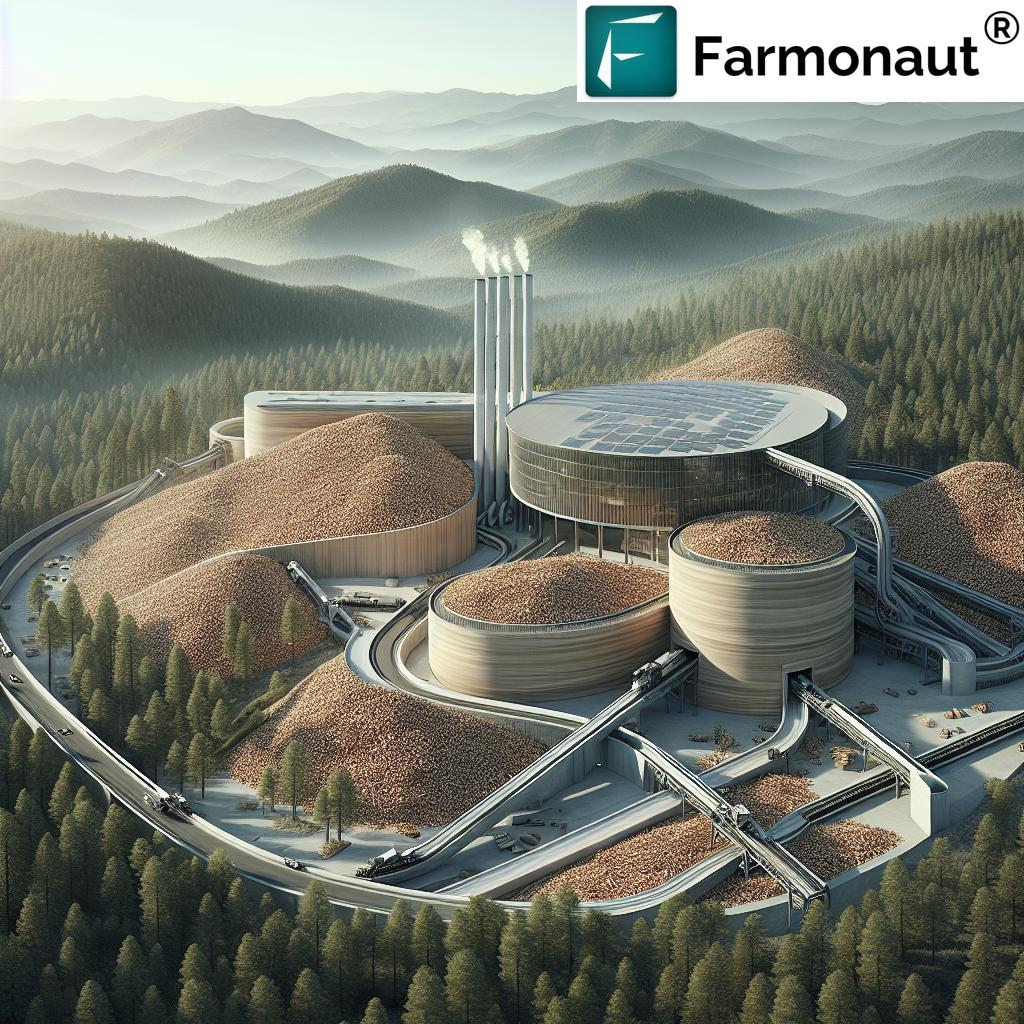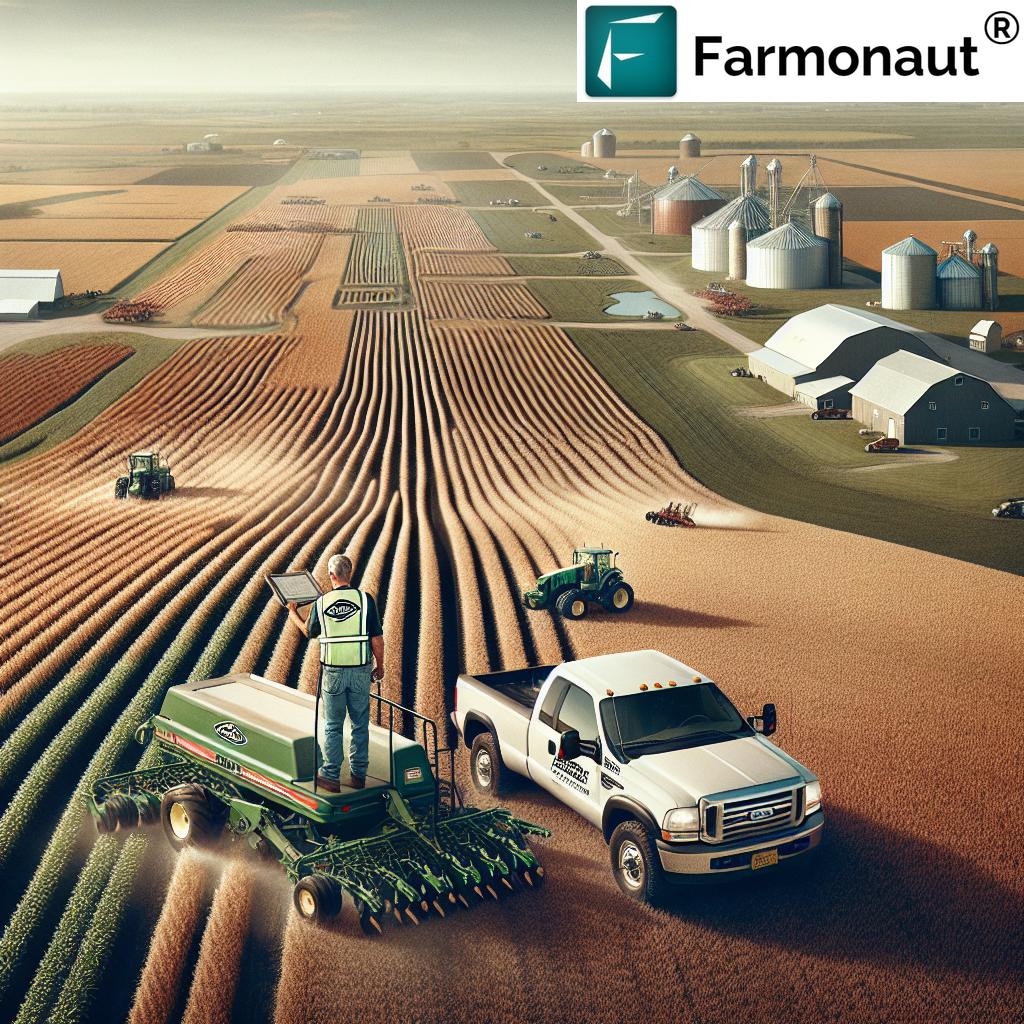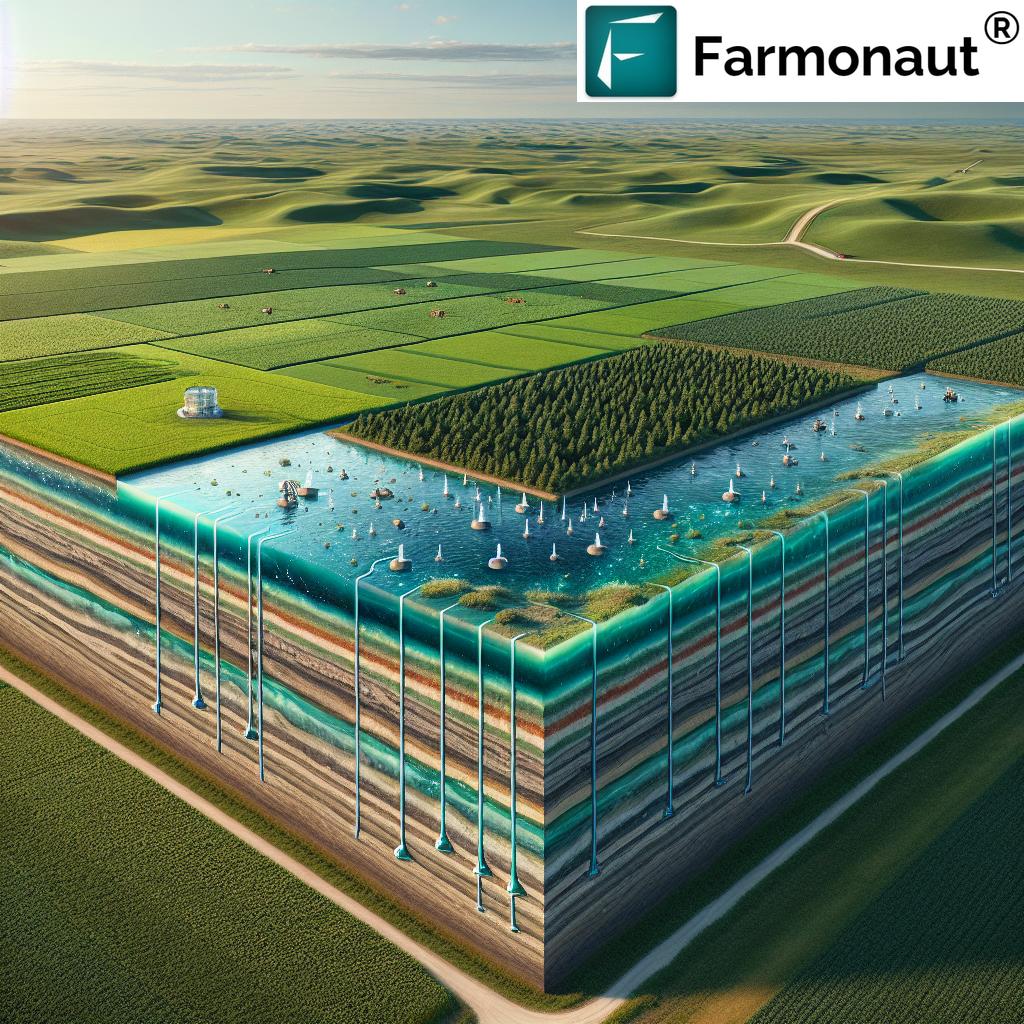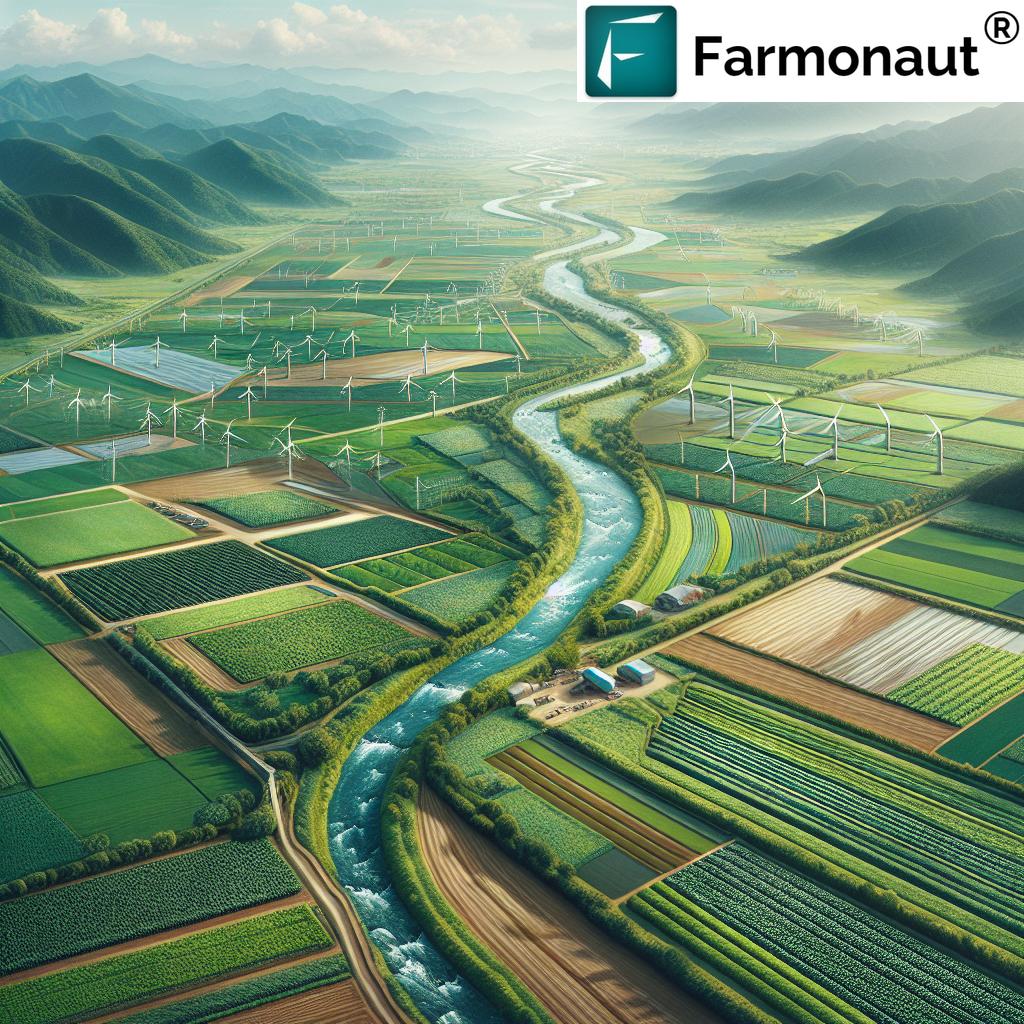Urban Farming New York City: 7 AI Innovations 2025
“By 2025, over 60% of New York City’s urban farms will integrate AI-powered crop monitoring systems.”
Introduction: New York City Innovative Farming 2025
Urban farming New York City stands as a defining movement in metropolitan agriculture for 2025, with AI innovations at its core. As New York City agriculture evolves, densely populated neighborhoods witness futuristic urban farming even within skyscraper clusters:
- Hydroponic vertical farms on office buildings and schools
- Community gardens using AI sensors for optimized crop output
- Rooftop greens enhanced by machine learning-enabled environmental controls
This vibrant approach doesn’t merely provide local, fresh produce—it redefines sustainability, food security, and environmental impact in urban America’s largest city.
The NYC Urban Farming Context: Agriculture’s New Landscape
New York City innovative farming has, in recent years, emerged as a global pioneering hub for embracing technology in urban agriculture. What sets urban farming in New York City apart?
- Advanced agricultural ecosystem—spanning all boroughs, integrated within infrastructure.
- Hydroponic facilities, vertical gardens, and modular farms transform underutilized urban spaces.
- Community gardens and rooftop farms connect residents to nutritious, locally grown food.
- Institutional partnerships with schools, public housing complexes, and commercial office buildings.
Such transformation responds to modern challenges:
- Increasing demand for fresh produce
- Minimizing carbon footprint associated with long-distance food transportation
- Creating new productive environments in densely populated urban areas
Crucially, this shift embeds sophisticated technology for optimal crop yield, resource management, and disease control—with AI as the driving force.
“Seven distinct AI innovations are set to transform urban agriculture across New York City rooftops and vertical farms by 2025.”
The Critical Role of AI in Urban Farming in New York City
Artificial intelligence isn’t just a buzzword in the New York City agriculture scene—it’s the backbone of progress for the 2025 era. What makes New York City AI in agriculture so transformative?
- Real-time crop and environment monitoring: AI-powered sensors, drones, and monitoring stations continually analyze light, temperature, humidity, soil nutrients, and disease vectors.
- Precision agriculture: Machine learning models allow for precise irrigation, fertilization, and pest strategies—reducing waste and maximizing productivity for urban farms.
- Sustainable control systems: Automated climate control in hydroponic facilities and vertical farms maintains optimum growth conditions, regardless of NYC’s unpredictable weather.
- Data-driven resource management: Analytics platforms help farmers analyze patterns, yield data, and growth cycles, enabling proactive rather than reactive farming.
- Enhanced disease and threat detection: Machine vision and deep learning flag potential threats early, enabling quicker interventions, more consistent output quality, and better food security.
The integration of these AI-driven systems is making urban farming New York City not only efficient and profitable, but truly resilient against future environmental pressures and population demands.
7 AI Innovations Transforming Urban Farming in New York City
Let’s dive deep into the seven AI innovations powering the next chapter of urban farming in the heart of New York by 2025 and beyond.
1. AI-Powered Crop Monitoring & Precision Sensing
Advanced networks of AI-driven sensors and drones are embedded across NYC’s urban farms—from rooftops in Manhattan to modular greenhouses in Brooklyn. These systems monitor and analyze:
- Light intensity and spectrum
- Soil moisture, nutrient content, and pH—key for even hydroponics and vertical gardens
- Ambient temperature, wind exposure, and microclimate variables
- Plant health, pest presence, and disease outbreaks via computer vision
- Yield data and growth rate predictions
Result: Farmers can make precise adjustments to irrigation, fertilization, and pest management, improving efficiency, reducing waste, and ensuring consistent fresh produce supply for city dwellers.
2. Automated Climate Control for Indoor & Hydroponic Farms
Gotham Greens and similar projects leverage AI-driven climate control systems in massive greenhouses. These platforms:
- Continuously regulate humidity, temperature, and air flow
- Adjust LED grow lights to maximize photosynthesis without unnecessary power drains
- Auto-balance CO2 for enhanced plant growth schedules
The impact? Reliable year-round production of leafy greens, herbs, and more—regardless of external NYC weather.
3. Machine Learning for Crop Growth Prediction & Yield Optimization
Sophisticated machine learning models ingest historic weather data, growing conditions, and sensor metrics to predict:
- Optimal planting and harvesting windows
- Growth patterns for different crop varieties
- Pest or disease outbreak risk periods (enabling proactive interventions)
These models enhance both the output quality, consistency, and food security for New Yorkers, sharpening the city’s edge in sustainable urban agriculture.
4. AI-Driven Resource Management Systems
Whether managing irrigation at a rooftop farm or fleet management for produce delivery, AI brings logistical efficiency by:
- Analyzing water, fertilizer, and energy use patterns for minimum waste
- Optimizing delivery routes for locally grown produce—minimizing carbon footprint
- Tracking greenhouse gas emissions for compliance and sustainable practices
For advanced fleet and resource management, explore this dedicated solution, providing satellite-informed logistics, operational oversight, and cost-effective planning for urban agriculture.
5. Disease and Pest Detection via AI & Computer Vision
Deep learning camera networks and handheld AI smartphone tools are deployed throughout New York City’s community gardens and hydroponic facilities. These:
- Identify potential disease symptoms and pest activity at early stages
- Trigger targeted interventions—reducing blanket pesticide use
- Keep crops healthy, improving both yield and sustainability
Combined with satellite-driven environmental monitoring for early threat detection, this fosters proactive and efficient urban farming management.
6. Blockchain Traceability Integrated with AI for City Supply Chains
Food authenticity and supply chain transparency are critical, especially in a vast and complex city like New York. Modern urban agriculture increasingly requires blockchain-backed systems that:
- Record every step in a crop’s journey from seedling to retail shelf
- Integrate AI-based advisory systems for data entry, anomaly detection, and transaction verification
- Build trust among retailers and NYC residents for ethical sustainable practices
Are you seeking robust blockchain traceability tools for your urban farm or retail operation? Visit our traceability solutions page.
7. Robotic & AI-Powered Urban Harvesters
The next wave for urban farming New York City includes mobile, AI-controlled robots that:
- Navigate between compact rows in dense rooftop or indoor gardens
- Detect when greens and vegetables reach micro-perfect ripeness
- Harvest with minimal loss and zero damage, ensuring output quality consistency
These robots, powered by predictive analytics, are expected to save significant labor hours and allow year-round scaling of urban food production in NYC’s productive environments.
Comparative Summary Table: 7 AI Innovations Transforming Urban Farming in New York City (2025)
| AI Technology | Urban Farming Application | Estimated Yield Increase (%) | Sustainability Benefit | Example Implementation (NYC Location/Project) |
|---|---|---|---|---|
| AI-Powered Crop Monitoring | Sensor-based real-time crop health, water & nutrient tracking | 15-30% | Reduces input waste, optimizes water usage | Brooklyn Grange rooftop farm |
| AI-Driven Climate Control | Automated temperature, humidity, lighting, and ventilation | 20-35% | Enables year-round production, reduces energy consumption | Gotham Greens, Greenpoint |
| Crop Growth Prediction with ML | Harvest & input scheduling, early threat detection | 10-25% | Mitigates disease/pest risk, increases certainty | Hudson Yards experimental garden |
| AI Resource Management Systems | Fleet, water, energy, and fertilizer management | 8-15% | Lowers carbon footprint, improves logistics | Harlem Grown distribution network |
| AI Disease & Pest Detection | Early threat alerts, targeted treatment planning | 10-20% | Reduces pesticide use, improves plant resilience | Bushwick hydroponics hub |
| Blockchain Traceability + AI | Secure, transparent citywide food supply chains | N/A (quality/consistency gain) | Enhances transparency, reduces fraud | East Harlem school garden distribution |
| Robotic & AI-Powered Harvesters | On-demand, minimal-waste harvesting in urban spaces | 15-25% | Attains maximum product quality, saves labor | Staten Island community garden co-op |
Community, Education & Social Impact of Urban Farming New York City
New York City innovative farming means more than technical advancement—it’s about empowering communities, improving food literacy, and reinforcing social equity in a metropolitan landscape.
Key Community Programs:
- Next-generation food education: Partnerships with schools embed gardening, environmental stewardship, and nutrition in curricula. Children in the Bronx, Harlem, and Queens learn how AI-driven urban agriculture intersects with environmental practices.
- Local jobs: Urban farms, especially those in public housing complexes, offer employment, aligning with sustainability and social mobility goals.
- Access to fresh food: Projects allocate produce to underserved neighborhoods, fighting food deserts and minimizing long-distance transportation needs.
- Community gardens: Active involvement with residents amplifies civic engagement, and brings urban greenspaces to life across boroughs.
These programs encourage a resilient, connected, and healthier NYC—serving as a model for urban farming worldwide.
Useful Technologies & Resources for NYC Urban Farmers in 2025
-
Track your farm with affordable satellite, AI, and blockchain solutions:
 Access Farmonaut Web App
Access Farmonaut Web App
|

|

- Developers & businesses: Integrate city-scale satellite and AI data for custom application development. API Portal & Developer Docs
- Eco-conscious in NYC? See how Carbon Footprinting Tools help track & reduce emissions from farm to market.
- Advanced farm traceability: Blockchain-based solutions for trustworthy, transparent supply. Learn more here.
- Manage large-scale community gardens or commercial urban farms: Smart tools for operations, yield analytics, and compliance in 2025 can be found on the Large-scale Farm Management page.
- Need crop-specific plantation and forest advice for the NYC area? Smart AI guidance is available via this platform.
Policy, Regulations & the Future of NYC Urban Agriculture
As urban farming New York City matures, city government is essential in fostering a supportive environment for innovation.
- Zoning reforms, green roof incentives, and vacant lot programs: The city government encourages rooftop farms and urban gardens, aligning with climate action and sustainability goals.
- Investment in research & data partnerships: Continued funding for public and private sector experimentation with AI-driven agricultural systems is key.
- Community empowerment & access: Expanded urban food production not only serves environmental justice but secures healthy, locally grown produce for millions.
Looking forward: By 2025 and beyond, the integration of robotics, AI, and traceability technology will further scale urban farming in New York City—setting new standards for cities worldwide.
The Farmonaut Edge: AI, Satellite Technology & Sustainable Urban Farming
As urban farming in New York City evolves, integrating next-level analytics and environmental control systems is more critical than ever. At Farmonaut, we are committed to making satellite-driven insights and AI advisory accessible and affordable for city farmers, urban agriculture managers, and local governments.
- Satellite-Based Monitoring: We enable live crop health, urban soil quality, and infrastructure scans for urban farms and community gardens across NYC.
- AI-Driven Jeevn Advisory System: We deliver real-time decision support—offering weather forecasts, disease risk models, and resource allocation strategies fine-tuned for city farming.
- Blockchain Traceability: We support reliable food chain authentication and transparency, directly from urban rooftop greens to the market.
- Fleet & Resource Management: Our platform empowers efficient logistics, helping minimize operational costs for deliveries and maintenance in dense city environments.
- Environmental Impact Monitoring: We provide actionable data for carbon footprinting, assisting NYC farms in exceeding sustainability targets.
If you’re scaling an NYC urban farming operation for 2025 or seeking the most up-to-date digital agriculture solutions, explore our platform:

For subscription pricing for individuals, businesses, or government entities, see below:
Frequently Asked Questions: Urban Farming, AI & NYC
What is urban farming in New York City and how is it different in 2025?
Urban farming in New York City refers to cultivating food crops inside the city using innovative land use, such as rooftops, vertical gardens, hydroponic systems, and underused city spaces. By 2025, these farms are deeply integrated with AI systems for monitoring, resource management, pest control, and climate regulation—resulting in higher yields and better sustainability than traditional city gardens.
How does AI benefit urban farming in New York City?
New York City AI in agriculture benefits urban farmers by providing real-time, actionable data to optimize crop yield, reduce input waste, predict threats, and automate harvesting, irrigation, and supply chain logistics. This increases efficiency and food security while minimizing environmental impact.
What are the main challenges urban farms face, and how does technology help overcome them?
Challenges include limited space, soil quality, climate control, labor costs, and the need for consistent output. AI, sensors, drones, blockchain, and machine learning help overcome these by automating many processes, optimizing resources, and providing transparency and predictive insights.
What role does satellite technology play in urban agriculture for NYC?
Satellite technology delivers bird’s-eye monitoring of crop health, urban microclimates, and environmental impacts. It facilitates large-scale, accurate, and affordable assessments unmatched by ground observation—vital for city-based agriculture.
How can small community gardens benefit from AI in New York City?
Even small gardens utilize cost-effective sensors and mobile apps for AI-driven irrigation and pest alerts; this ensures better yields and reduces operational effort. Community gardens can also benefit from digital traceability and resource optimization.
Are there specific apps or platforms for urban farmers wanting these AI advantages in NYC?
Yes. Farmonaut offers affordable, scalable solutions for crop monitoring, resource management, blockchain traceability, and detailed advisory—all accessible online or via mobile devices (see the web and mobile apps above).
Can AI and technology adoption help improve food equity in New York City?
Absolutely. AI-powered urban farming increases yields, reduces waste, and makes locally grown, fresh produce accessible to underserved communities, thereby promoting food equity and sustainability.
Conclusion: Setting the Global Standard in 2025
Urban farming New York City in 2025 is at the cutting edge of urban agriculture—fusing advanced AI, sustainable practices, and community-oriented design. With real-time crop monitoring, precision climate control, machine learning analytics, blockchain-based traceability, and robotic harvesters, NYC not only addresses its own food security challenges but exemplifies how world cities can become resilient, productive, and green food hubs.
As new technologies emerge—from AI-enhanced breeding to blockchain-verified citywide food supply chains—New York sets a model for balancing productivity, sustainability, and inclusivity. The future is here, on the city’s rooftops, vertical gardens, and community gardens.
To all forward-thinking NYC residents, businesses, and policy makers—embrace the transformation.
Learn more and access the tools shaping the next decade of urban farming:












